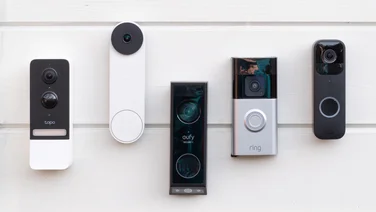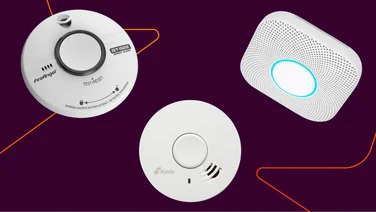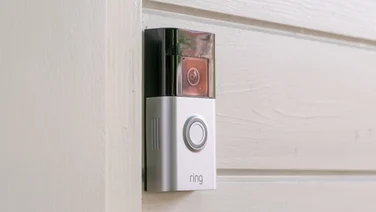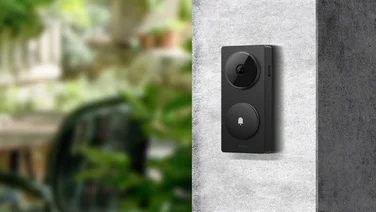To help us provide you with free impartial advice, we may earn a commission if you buy through links on our site. Learn more

If you’re using any smart home technology, there’s a good chance it runs on Zigbee – a wireless communications protocol designed to underpin everything from thermostats to lightbulbs.
Zigbee is designed by the Zigbee alliance, a group that includes Amazon, Samsung, Huawei, Qualcomm and Toshiba, not to mention many of the other biggest companies in the home appliances, energy and consumer technology industries. More importantly, it’s fast becoming the standard wireless protocol that smart home devices use to communicate.
How does Zigbee work?
Smart devices need wireless communications in order to take commands from smart home hubs and the apps that control them, and in order to relay information back to those hubs and apps. You might think these devices could use Wi-Fi – and some do – but this is far from ideal.
For one thing, Wi-Fi uses a lot of power, which is bad news for battery-powered devices or devices where low power consumption is important, such as a light bulb. What’s more, having too many devices on a single home network isn’t always such a great idea for performance or stability, while range can also be an issue across larger homes.
Here Zigbee has several advantages. First, it uses less power than Wi-Fi. Secondly, it’s designed to support hundreds of devices on a network, though individual hubs might support far fewer than that. Most importantly, though, Zigbee uses a different kind of network, called a mesh network. Instead of each device having a direct connection back to the hub, as with Wi-Fi, each Zigbee device can connect through another Zigbee device, with that device relaying packets of data back and forth between the two. In fact, those packets can be relayed through multiple devices as it travels.
This mesh structure means that, as long as different devices remain in range and connected to each other, they can communicate with the hub even if placed very far away from it. Provided the mesh holds up in-between, you can spread Zigbee devices all around the house, or even in the garden, and if one device fails or is powered off it shouldn’t matter, as other nearby Zigbee devices should fill in the missing links.
Why does Zigbee matter?
What makes Zigbee useful is that it’s designed for interoperability, so that light bulbs or a thermostat from one manufacturer will still communicate and operate with devices from other manufacturers. This also means that a switch or motion sensor from one manufacturer should work with light-bulbs or security cameras from another. We say ‘should’ as some Zigbee devices still don’t play well with other Zigbee devices – something the Zigbee alliance really needs to clean up.
Nor does this necessarily mean some kind of promised land where everything works perfectly with everything else. To get a Philips Hue lighting system up and running with all available colours and fully functional switches, you still need Hue bulbs, a Hue hub and Hue switches. However, you can add a few compatible bulbs from a third-party in there or a compatible switch or sensor. You won’t get the full range of features or colours, but it’ll work.
The other thing that makes Zigbee interesting is that you can use a wide range of devices from different manufacturers without needing a specific hub for each; something that can cause problems if they’re all running over the same 2.4GHz wireless band.
Some Zigbee light bulbs and thermostats, for instance, will connect directly to a Samsung SmartThings hub, while the same goes with many bulbs – even Hue bulbs – and the hub built into the Amazon Echo Plus or second generation Echo Show. This makes the Echo Plus or SmartThings a nice, affordable way into smart home tech, not to mention a more elegant approach than separate hubs.
Is Zigbee the only option?
No. Some manufacturers use Wi-Fi as it works directly with a router and doesn’t need a special hub, while there’s also a rival wireless protocol – Z-Wave – which does much the same thing but operates on a different frequency band, where it can’t interfere with Wi-Fi (though in practice, this isn’t a problem for Zigbee). Samsung’s SmartThings hub will work with both protocols. Some also hope that Bluetooth LE might take over in the future, as mesh networking is part of its spec. Right now, though, the momentum is with Zigbee.
READ NEXT: What’s compatible with Amazon Echo? All the smart devices that work with the Alexa speaker
What do you need to get started?
Looking to kick off your Zigbee smart home? Try the following:
1. Amazon Echo Plus
Price: £140 | Buy now from Amazon

Amazon’s plus-sized speaker has a built-in Zigbee hub, making it a great foundation for a smart home. You can use the Alexa app on your phone or tablet to add, group and manage Zigbee devices, set up your own scenes and routines, then activate them using voice commands. Grab yourself some Zigbee bulbs, sensors and switches and you can build from there.
Read our full Echo Plus review
2. Samsung SmartThings Hub
Price: £80 | Buy now from Amazon

If you don’t fancy splashing out on Amazon’s premium smart speaker, Samsung’s SmartThings Hub is a brilliant (and cheaper) alternative. It won’t control Philips Hue bulbs directly, but it’ll work with a growing range of lighting, heating and security products, not to mention selected Samsung smart TVs and home appliances, and Bose SoundTouch speakers. And if you want voice control, just add an Echo Dot or Google Home Mini to the mix.
3. Innr Bulbs
Price: from £20 | Buy now from Amazon

Innr’s bulbs are slightly cheaper than the Hue alternative, yet still work brilliantly with a direct connection to an Echo Plus, Echo Show or SmartThings Hub. They come in B22 bayonet, E27 screw and GU10 varieties, in standard white, tunable white and colour variations. You won’t find a more affordable or effective way into smart lighting.
4. Trust Smart Home Zigbee Wireless Contact Sensors
Price: £25 | Buy now from Amazon

Trust’s contact sensors play nice with Zigbee hubs. Stick one on your door and one on your frame and you can have lights springing into action as soon as the door opens. You can also use them on doors and windows to send you notifications if they’re opened. They’re easy to fit and run from an easily replaceable CR2 button battery.
5. Ajax Smart ZigBee Plug
Price: £30 | Buy now from Amazon

The majority of budget smart sockets or power outlets are using Wi-Fi, but Ajax’s works in a Zigbee network. As a result, you can connect it directly to an Echo Plus, Hue bridge or SmartThings hub and control whatever device you plug into it, which makes it ideal for electric heaters, coffee machines and standard lamps.











